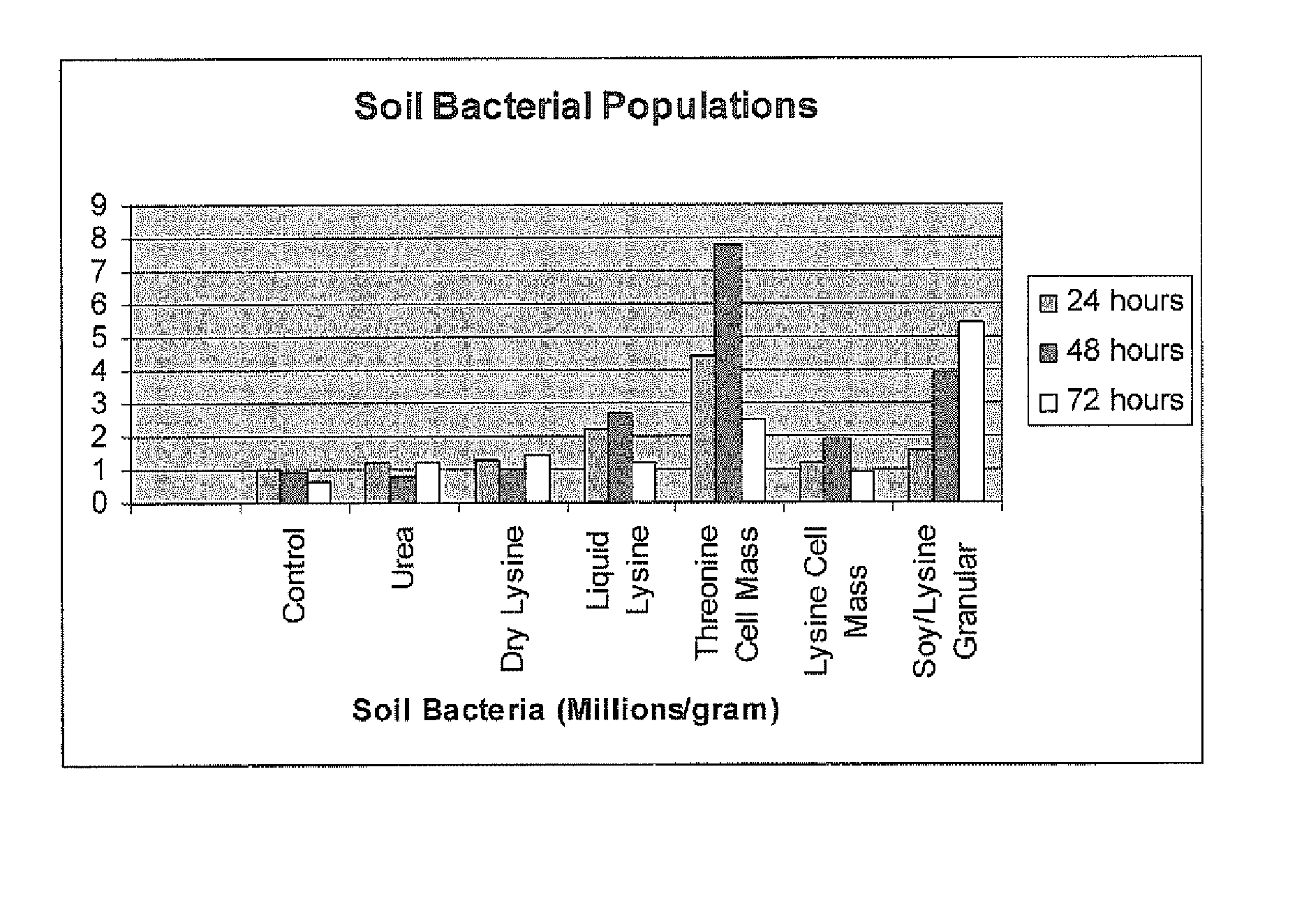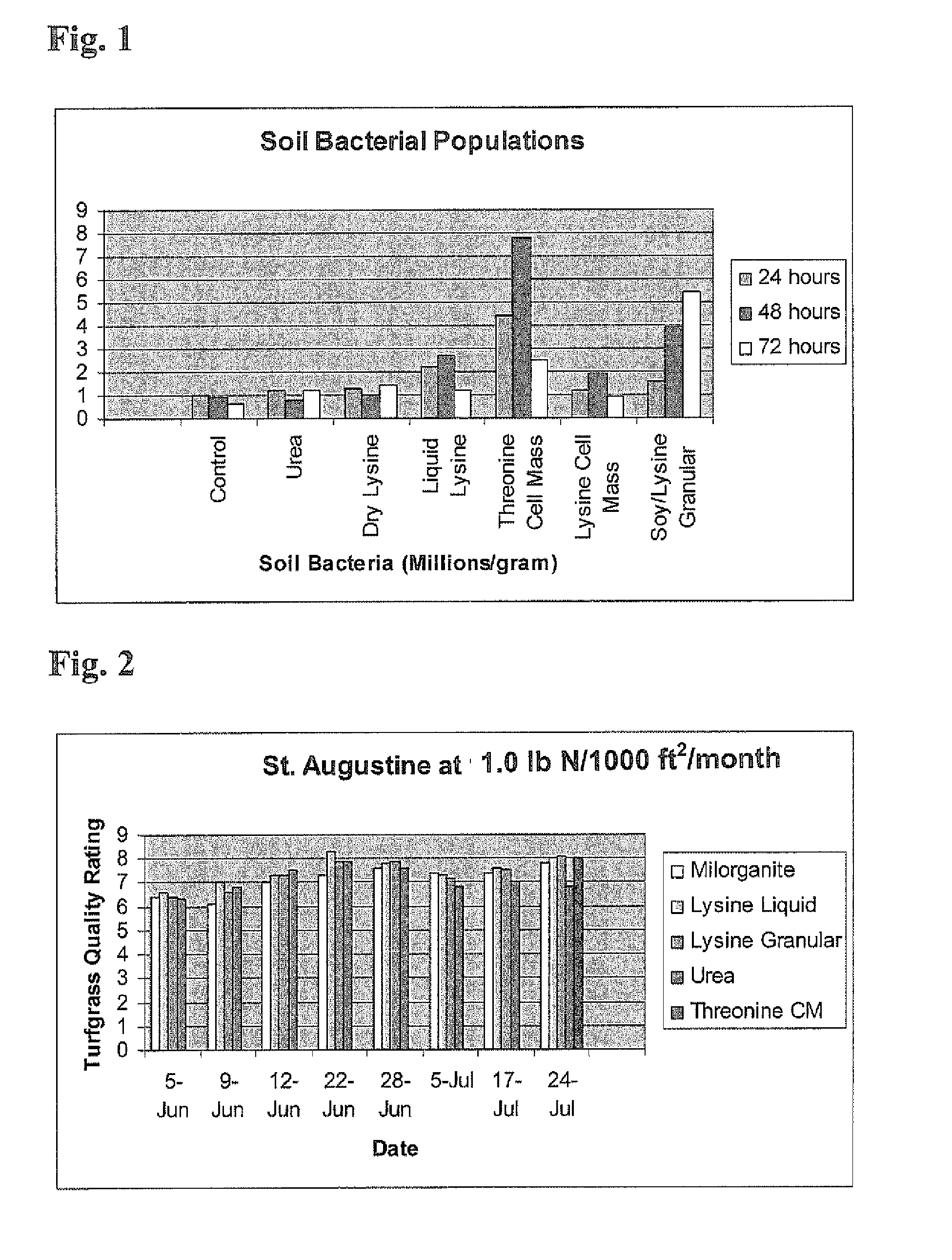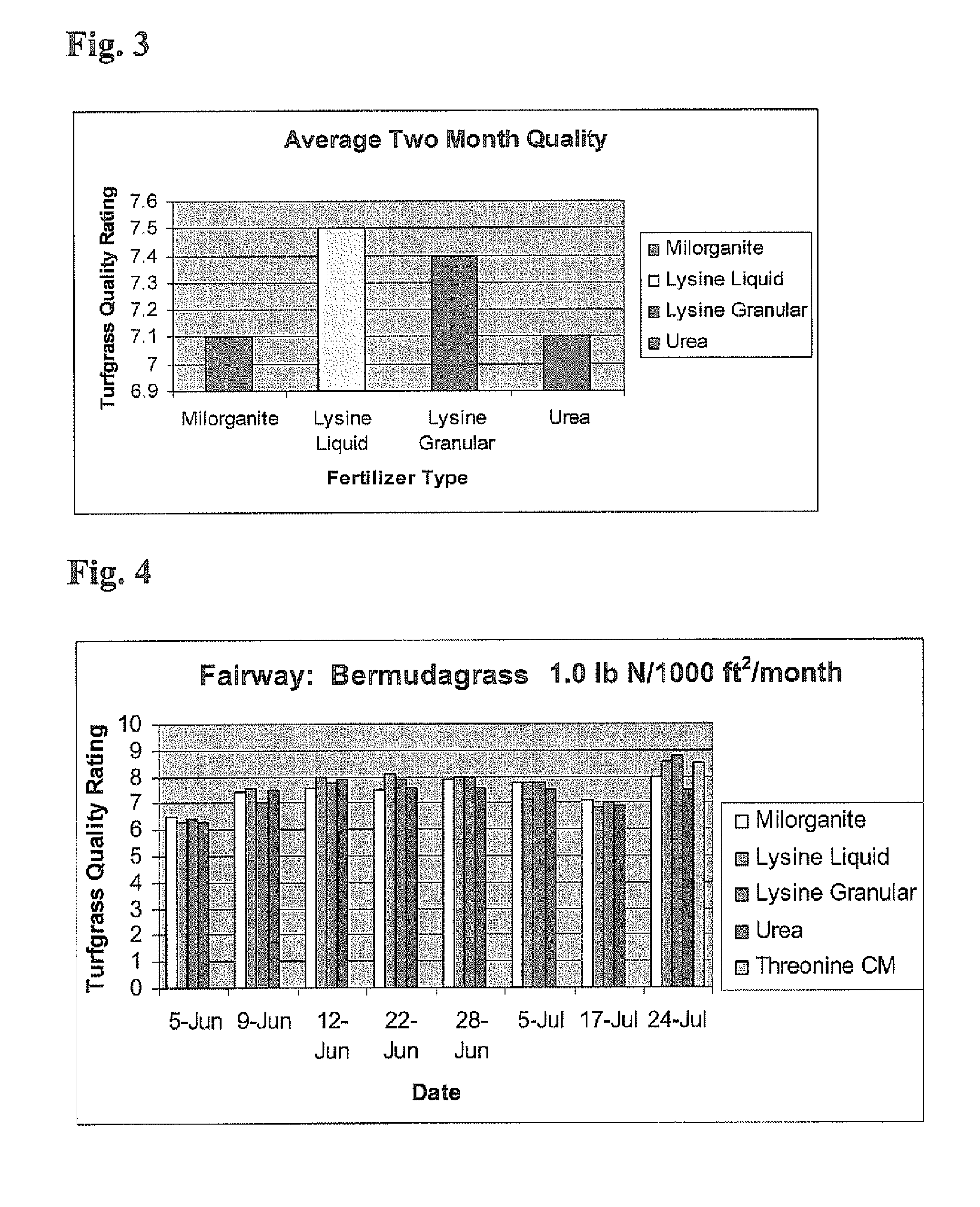Fertilizer compositions and methods of using
- Summary
- Abstract
- Description
- Claims
- Application Information
AI Technical Summary
Benefits of technology
Problems solved by technology
Method used
Image
Examples
example 1
[0093] A fertilizer composition may be prepared with an organic compound that is L-lysine inonohydrochloride (HCl). L-lysine monohydrochloride (available from Archer-Daniels-Midland Company, Decatur, Ill., as well as other suppliers) may be utilized either as a granular solid or as an aqueous solution. L-lysine (HCl) has a purity of 98.5%, a crude protein content of about 94.4% (as measured by a nitrogen content times 6.25), an HCl content of about 19.7%, and an L-lysine content of about 78.8% with about 100% isomeric purity. Commercial L-Lysine (HCl) may come in the form of tan colored granules having a particle size of 2O at 25° C. ranging from 500 g / L to 600 g / L. and has a bulk density ranging from 0.61 g / cm3 to 0.71 g / cm3. The L-lysine (HCl) may be feed grade, commercial grade, or any other suitable grade. L-lysine (HCl) has a nitrogen content of approximately 15% and is readily available at a low unit cost of nitrogen. The L-lysine (HCl) may be applied to soil in an amount of a...
example 2
[0094] A fertilizer composition may be prepared with an organic compound that is LIQUID LYSINE brand lysine (available from Archer-Daniels-Midland Company, Decatur, Ill.). LIQUID LYSINE brand lysine is an approximately 50% (by weight) aqueous solution of L-lysine free-base obtained by concentrating lysine from a lysine fermentation broth. LIQUID LYSINE brand lysine is a dark brown liquid having a crude protein content of about 61.5% (as measured by a nitrogen content times 6.25), a density of from about 9.5 lbs / gal to about 9.6 lbs / gal, and an L-lysine content of about 50% with about 100% isomeric purity. The LIQUID LYSINE brand lysine may be sprayed directly onto the soil in an amount of about 1.0 L / acre to about 350 L / acre or diluted with water to a concentration of about 1% to about 99% by weight of LIQUID LYSINE brand lysine and the diluted solution applied to the soil in an amount of about 1.0 L / acre to about 4000 L / acre.
example 3
[0095] A fertilizer composition may be prepared with an organic compound that is LIQUID LYSINE brand lysine. LIQUID LYSINE brand lysine comprises a 50%, by weight, aqueous solution of L-lysine free-base (100% isomeric purity). LIQUID LYSINE may further comprise small amounts of other complex organic molecules, such as, for example, carbohydrates. LIQUID LYSINE is a dark brown liquid, having a density ranging from about 1.13 g / cm3 to about 1.15 g / cm3 and a pH ranging from about 9.6 to about 11.0. LIQUID LYSINE may have an L,lysine content of about 50% (minimum) and a moisture content of about 48% (mnaximuin). LIQUID LYSINE may be obtained from concentrating the lysine product of a lysine fermentation process.
[0096] The LIQUID LYSINE brand lysine may be sprayed directly onto the soil in an amount of about 165 L / acre to about 496 L / acre. Alternatively, LIQUID LYSINE may be applied as a foliar fertilizer, sprayed directly onto the plant. The LIQUID LYSINE brand lysine may be diluted wi...
PUM
 Login to View More
Login to View More Abstract
Description
Claims
Application Information
 Login to View More
Login to View More - R&D
- Intellectual Property
- Life Sciences
- Materials
- Tech Scout
- Unparalleled Data Quality
- Higher Quality Content
- 60% Fewer Hallucinations
Browse by: Latest US Patents, China's latest patents, Technical Efficacy Thesaurus, Application Domain, Technology Topic, Popular Technical Reports.
© 2025 PatSnap. All rights reserved.Legal|Privacy policy|Modern Slavery Act Transparency Statement|Sitemap|About US| Contact US: help@patsnap.com



